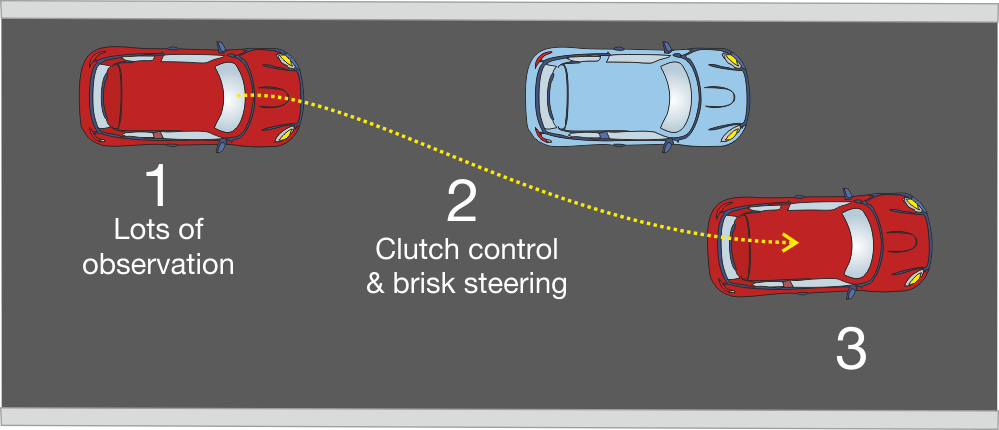


This brief unit has no worksheet or checklist. You will be practising the angle start whenever you do the parallel parking manoeuvre as well as the dedicated practise here and most times that you park in town. Simply self-assess based on the normal driving criteria of being under control, being aware and not causing inconvenience or danger.
The moving off at an angle exercise requires you to move out from behind a parked car or other fixed object. It is something that you do every time you leave a parking space in a busy street - but are you doing it as safely as you might?
Spend between ten and twenty minutes practising this manoeuvre. Any roads will do; however you might want to start on quiet roads to get into the routine.
This might seem like a fairly basic exercise, however, there are lots of different accidents you can have doing this kind of manoeuvre!
When moving out at an angle you need to pay particular attention to traffic approaching from both the front and behind.
From the front because you may swing into its path, from behind because you will be moving out slowly and other cars will catch up quickly.
Look behind too much and you could clip the car in front, not enough and you risk problems from behind.
It is also a good idea to look around at least twice as you move to double check that there is enough time to move out safely.

At point 1:
Make sure that you complete the normal safely checks before moving off. This means checking all around the car for anything that might affect the manoeuvre. Move off promptly as soon as it is safe to do so without a delay between looking and starting to move.
Consider a signal. While, more often than not, you won't need a signal when moving, there are more variables in an angle start; there are also more restrictions to vision. This means that, on the one hand a signal is perhaps more likely to be used when moving off at an angle than straight, but on the other hand there is possibly more scope for a misleading signal. Trust your judgment, make all the normal checks; only signal if it will be of benefit.
At point 2:
Make an extra shoulder check to the right.
It's not unusual to see experienced drivers 'lurch' out into traffic or fight with the steering wheel when they are moving out from behind parked vehicles. The reason for this is often related to poor clutch control. Even drivers with excellent clutch control can rush angle starts if they feel under pressure from traffic - you are not in a hurry! Any time gained by beating a couple of cars has to be weighed against the dangers of lost time if it goes wrong.
At point 3:
Check mirrors to ensure that it is safe to proceed and cancel your signal (if used).
Next: Straight reversing